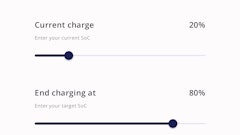
The food and beverage industry is facing a number of rules and regulations whose impact will be significant this year. Mostly, they are geared towards promoting greater food safety from farm to fork, along with enhancing sustainability throughout the trucking and aviation sectors.
FSMA update
According to the Centers for Disease Control and Prevention (CDC), approximately 48 million Americans fall ill each year to foodborne diseases like Salmonella and Listeria bacteria. With the Food Safety Modernization Act (FSMA) starting to gain momentum, the U.S. will be moving from reacting to foodborne illness outbreaks to preventing them.
On January 4, 2013, the Food and Drug Administration (FDA) introduced two major components to the FSMA called the Preventative Controls rule and the Produce rule. In short, the proposed Preventative Controls rule will require food facilities to have a written food safety plan that identifies and implements preventative controls. The written food safety plan must also identify biological, chemical or physical hazards.
But does this apply to food shippers?
The proposed Preventative Controls rule applies to those that are registered as a food facility or facilities that manufacture, process, pack or hold food. Members of the transportation industry are advised to work closely with the food facilities that they haul for to better recognize shipping risks, such as sanitizing transportation equipment and proper temperature controls.
“The FDA is taking a full risk-based approach to food safety and they’re looking at the entire supply chain,” notes Dr. Bob Whitaker, chief scientific officer of the Newark, Delaware-based Produce Marketing Association (PMA). “I think it’s hard to predict right now how much it’ll affect transportation, but clearly the owners and operators of these businesses that are preparing and manufacturing food have a responsibility to do risk assessments, hazard analysis and risk preventative controls.”
Meanwhile, the proposed Produce rule will require farms to develop standards that minimize the risk of health hazards and take actions to prevent foreseeable hazards from occurring. This regulation will apply to farms that grow produce domestically; produce that is imported into the U.S.; and companies that harvest, pack or hold produce.
Currently, both the Preventative Controls rule and the Produce rule are proposals and have no legal effect on the transportation industry until the finalized regulations are published. The FDA is allowing the public to comment on the proposed rules until Thursday, May 16, 2013. After the comment period is over, the FDA will make modifications in accordance with the feedback from the industry. Additional proposed rules such as the Foreign Supplier Verification Program (FSVP), Accreditation of Third Party Auditors, and initiatives surrounding traceability are expected to be released next.
“The next set of regulations to be rolled out will include more responsibility for importers,” says Mike Rozembajgier, vice president of recalls for Indianapolis, Indiana-based Stericycle ExpertRECALL. “International food companies would be smart to establish relationships with venders who ensure that they’ve got product retrieval process that can run efficiently in the event of a problem.”
Although the new components to the FSMA have yet to become effective, there are ways shippers of perishable foods can prepare for compliance while reducing shrink.
Preparing for FSMA
The FSMA promises to impact shippers in various ways, from making sure the insides of trailers are sanitized to having the ability to efficiently track the loads that have been transported by the trailers. Utilizing the right technologies can help assurance businesses of compliance.
Santa Clara, California-based Intelleflex provides radio frequency identification (RFID) temperature tags to address traceability and regulatory requirements for the transportation sector.
“We utilize temperature monitoring and condition monitoring to ensure that products have been properly stored and handled throughout transportation from the field all the way to the retailer,” says Kevin Payne, senior director of marketing of Intelleflex. “Every step of the cold chain is going to have to address sanitation requirements and improve documentation.”
Condition monitoring helps to better prioritize each shipment of product throughout the cold chain. Accurate monitoring helps to generate more revenue from reducing shrink that is caused by spoilage. Access to detailed documentation of each pallet is also a huge advantage for the transportation industry. Aside from collecting temperature data throughout transit, the monitoring tag also records information on such as when the food products were harvested; where it was packed; when it was handed over to a trucker and when it was delivered to a distribution center.
RFID tags also prevent and minimize opportunities for food safety issues to occur by assessing the temperature history and validating whether or not there were any abnormal temperate spikes during transit.
“Prevention is the cornerstone of the new law,” says Sue Challis, editor and writer of the center for food safety and applied nutrition, FDA. “Congress has recognized that prevention is a shared responsibility of all participants in the food system. With the new law, FDA has a clear mandate to make the use of modern preventative controls the norm across the entire food supply.”
The latest trucking regulations
Meanwhile, in the trucking industry there are also some new regulations around the corner. According to Karen Caesar, information officer of Sacramento, California-based California Air Resource Board (CARB), there will be an additional regulation to their Diesel Risk Reduction Plan.
The public process for this additional regulation will begin sometime in 2013. This new regulation “is geared toward modernizing agricultural equipment and reducing harmful diesel emissions from agricultural equipment engines,” explains Caesar.
In addition, CARB’s Tractor-Trailer Greenhouse Gas Regulation, which was adopted in 2008, now states that starting January 1, 2013, all 2010 and older tractor fleets must use SmartWay verified low rolling resistance tires. The use of low rolling resistance tires helps to reduce greenhouse gas emissions and reduce diesel fuel consumption. This applies to both dry and refrigerated trailers that are 53-foot or longer. It is important to note that drayage fleets that operate within a 100 mile radius of a port or intermodal rail yard are exempt from this new regulation.
Normally, vehicles that operate in California must comply with California’s regulations, including those from Canada and Mexico. However, businesses with noncompliant vehicles can request a Three Day Pass that allows them to operate within the state.
“The Three Day Pass allows one vehicle per company, per year, to operate for three consecutive days in the state of California without complying with the Truck and Bus regulation as long as they requested the pass three days prior to the date they wish to operate,” says Caesar.
Other rules in the trucking industry include changes to the Hours of Service (HOS) regulations. In particular, there are two significant updates to the HOS, which is scheduled to go into effect on July 1. One provision places limitations on minimum 34-hour restarts, which must “require that anyone using the 34-hour restart provision have as part of the restart, two periods that include 1:00am to 5:00am” according to the Federal Motor Carrier Safety Administration (FMCSA).
In addition to the 34-hour restart provision, a driver may drive only if eight hours or less have passed since the end of the driver’s last 30 minute rest break. Some trucking organizations have expressed concern with the latest updates to the HOS rule. Members of the Arlington, Virginia-based American Trucking Associations (ATA) believe the updated rule will actually do more harm than good by placing additional drivers and trucks on the road to accommodate the new requirements.
“We’re one of the organizations challenging the regulations,” says Dave Osiecki, SVP of policy and regulatory affairs for the ATA. “There is little or no new research that supports these rules and that’s the main reason we’re challenging them.”
Although trucking organizations like the ATA are challenging the new rule, Osiecki suggests that carriers should plan and prepare for compliance, should the latest HOS rule become effective on July 1.
In the meantime, the trucking industry should expect to see regulations mandating the use of electronic onboard recorders (EOBRs) on the horizon.
Furthermore, the Moving Ahead for Progress in the 21st Century (MAP-21) EOBR legislation, which was signed into law July 6, 2012, requires the FMCSA to issue a final rule for the mandate by July 2013. The effective date of the mandate – two years after the issuance of the final rule – is set for July 2015.
Changes for the aviation sector
Last November, the European Commission postponed the implementation of the European Union Emissions Trading Scheme (EU ETS) due to various issues and oppositions to the law. The EU ETS, which planned to place a cap on the total amount of emissions that can be emitted by all flights to and from Europe, is said to encroach on the sovereignty of other countries’ airspace.
“During the summer, 17 nations met in Washington, D.C. to discuss steps to address international aviation emissions through the International Civil Aviation Organization (ICAO),” notes Perry Flint, head of corporate communications, the Americas, for the International Air Transport Association (IATA). “They reaffirmed their continued strong opposition to the EU’s unilateral and extra-territorial inclusion of international aviation in the EU ETS.”
Accidental overlap of similar emission schemes along with the possibility of airlines getting double-taxed for the same emissions is also adding to the delay in implementation.
Some in the industry contend that a regulation like the EU ETS is important to the aviation sector as a mechanism for promoting energy efficient and lowering the cost of aviation fuel. According to Isaac Valero-Ladron, spokesman of the European Commission for climate action, by 2020 global international aviation emissions are projected to be approximately 70 percent higher than those in 2005—even if fuel efficiency improves by 2 percent each year.
“ICAO forecasts that by 2050 they could grow by a further 300 to 700 percent,” warns Valero-Ladron. “The large majority of these emissions come from international flights. By including aviation in the EU Emissions Trading System, it is forecast we could save around 176 million tonnes of CO2 emissions over the period up to 2015.”
Since the EU ETS has been put on hold, the ICAO will need to take time to articulate an alternative solution and generate a global agreement that will be practical for the aviation sector. The final decision will take place at the next ICAO Assembly in September.
“There’s not much that the food logistics people will need to do at this stage,” says Haldane Dodd, head of communications for Geneva, Switzerland-based Air Transport Action Group (ATAG). “But we’re certainly hoping for some significant progress at that meeting and hopefully at that point the Europeans will say we don’t need to do what we did with the emissions trading scheme for all external flights—we can have a global measurement to put in place.”



























